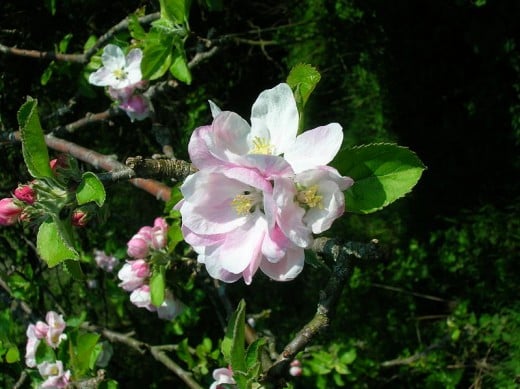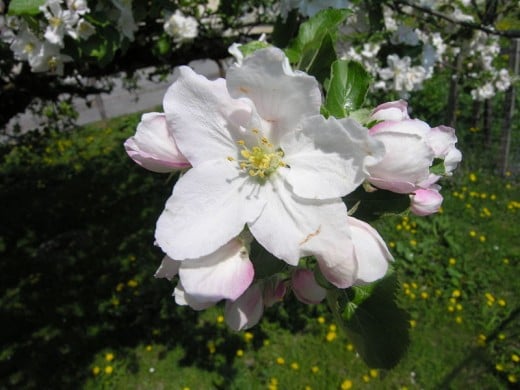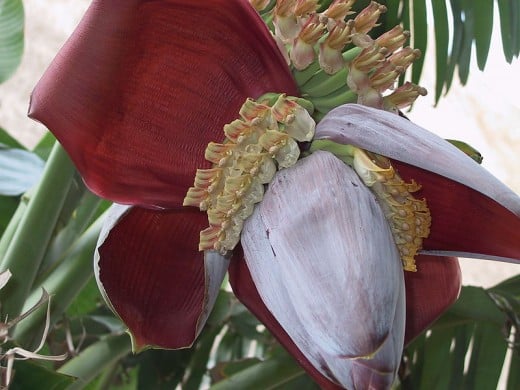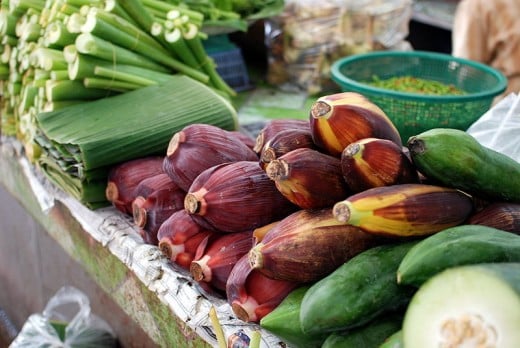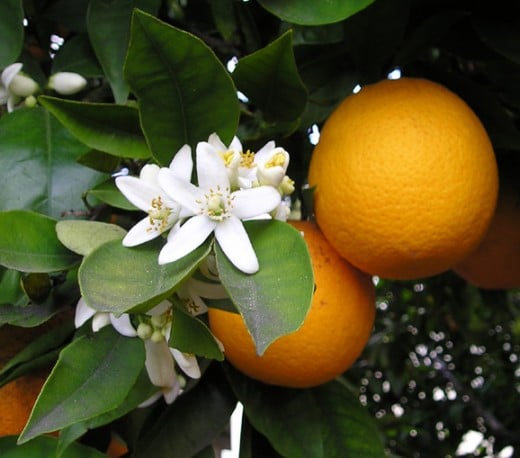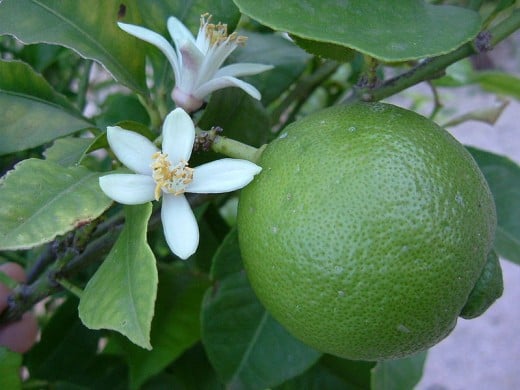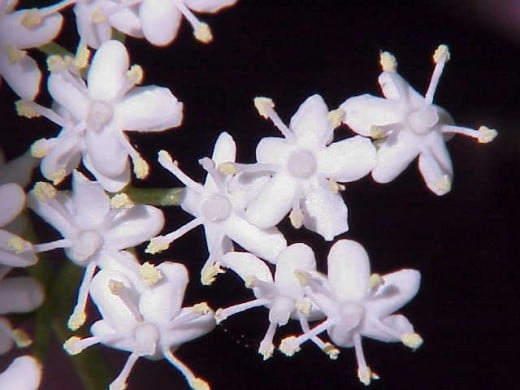Edible Flowers - Part 2
Fruit Flowers
This is the second of a four part series on flowers you can eat. This hub will cover the flowers of fruit trees. Specifically apple, orange, lime, lemon, and elderberry.
Greater care must be taken with these flowers. Some parts of the flower can be toxic and the seeds of some are known to contain cyanide.
For example one should never eat apple seeds. Apple seed contain cyanide precursors (amygdalin) which can be metabolized in the human body into hydrogen cyanide.
"The flower is the poetry of reproduction. It is an example of the eternal seductiveness of life."
- Jean Giraudoux"If there were nothing else to trouble us, the fate of the flowers would make us sad."
- John Lancaster Spalding
Obligatory Warnings
You should never eat florist supplied flowers. They are often treated with insecticides and preservatives. Ingesting these chemicals can make you quite ill. For that reason it's best to either get your edible flowers from a reliable source or grow them yourself.
Now that we have the important bits out of the way, the following is the best way to choose your flowers for food.
- Pick your flowers in the morning just after they've opened or just as the sun has come up.
- Examine your flowers for cuts, blemishes, or signs of insect activity. Reject less than perfect flowers.
- Pick your flowers as close to the day you intend to use them as possible. The same day is best.
- Just prior to using flowers or petals in salad dunk them in ice water to freshen them.







Varieties of Fruit Flowers
Apple Blossom: Apple flowers have a nice floral scent and sweet flavor. They are often used as an addition to fruit salads. They can also be "candied" (see below). The apple blossom is the state flower of both Michigan and Arkansas.
Banana Blossom: Also known as banana hearts these flowers look distinctly different than most flowers. In fact they are downright intimidating looking. The flowers are a purple-maroon and cigar shaped. They typically grow out of the top of the largest of the trunks.
Banana blossoms are very common in Southeast Asian dishes. The blossoms can be cooked or eaten raw. In either case the tough covering is removed until one gets to the almost white tender parts of the blossom.
The blossom can be sliced and left to sit in cold water until most of the sap is leached away. If you eat it raw, make sure the blossom comes from a Southeast Asian variety; these are not bitter.
Citrus Blossom: These blossoms are highly scented, waxy
petals. Be sure to use them sparingly.
A distillate of orange flower water is often used in Middle Eastern
pastries and beverages.
Orange (lemon or lime) water is also used to flavor marshmallow and scones. Citrus distillates are also used for flavor in drinks (soft-drinks) and in perfume as fragrance.
Elderberry Flowers: These flowers are a creamy off-white color. They have a sweet scent and sweeter taste. This is the one flower you want to avoid washing as doing so will remove much of the flavor and scent.
Since you won't want to wash them be extremely selective when inspecting the petals for insects and disease. Elderberry has been used as a folk medicinal in Europe for centuries.Of course, elderberry is also used to make wine. Only the flowers and berries are edible as all other parts of the plant are mildly toxic. Additionally, eating raw uncooked berries could cause nausea, vomiting, and diarrhea.
Preparing the Flower as Food
- If gathering the flowers from your garden snip off about one inch of stem just below the head of the flower itself. This will give you something to hang on to as you wash it.
- Once gathered turn the flower upside down (preferably while outside) to shake out any "visitors." A bee or other bug will not add the right flavor notes to your dish.
- Once inside run some cold water into a bowl and, with
the flower side down, rinse the blossom in the water by immersing it
and gently agitating it in the water. As each blossom is cleaned set it
on a paper or cloth towel. This is the extent of the cleaning.
- Once you've got your flowers cleaned wrap them gently in a paper towel, put the towel wrapped flowers in a plastic bag, seal it, and put the bag in the vegetable crisper. With any luck they'll last about a week.
Apple Blossom Punch
Ingredients
- 48 ounces of Apple Juice or Cider
- 6 ounces of lemonaid (you can use limeaid too)
- 2 Cups of Cranberry Juice
- 1 Cup of Dry Vermouth (or white wine [optional])
- 4, 6, or 8 apple blossoms
- Ice cubes or block of ice
- Prepare the flowers by cleaning, drying on paper towels, and prior to use dunked briefly in ice water.
- Mix all the ingredients above (except blossoms and ice) in a large punchbowl.
- Add ice, decorate rim with apple blossoms and present.
Apple Blossom Ice-Cream Soda
Ingredients
- 2 Cups of Apple juice or Apple cider
- 1 Pint Peach ice cream
- Dry ginger ale, well chilled
- apple slices, to garnish
- Apple blossoms cleaned and chilled in ice water
Directions
- Pour 1/2 Cup of juice or cider into four (4) tall (highball) glasses.
- Place one or two scoops of peach ice-cream equally in each glass.
- Fill glasses with chilled
ginger ale.
- Stir very gently to mix.
- Garnish glasses with apple slices and blossoms
- Serve immediately.
Candied Apple (or any other) Blossom
This recipe can be used to candy any edible blossom, not just apple.
Ingredients
- Rinsed edible flower blossoms, separated from the stem
- 1
extra-large egg white, at room temperature, mixed for consistency
- A Few drops of water
- 1 Cup superfine sugar
- A small (very clean) paint brush
- A baking rack covered with waxed paper
Directions
- In a small bowl, combine the egg white and water.
- Beat lightly
with a fork or small whisk until the white just shows a few bubbles.
- Place the sugar in a separate shallow dish.
- Hold each flower (or petal) in one hand.
- Dip the paintbrush in the egg-white mixture and gently paint the top and bottom of the flower petals.
- Now, holding the flower over the sugar, take a pinch of sugar and sprinkle all over the flower on both sides.
- Gently place the "candied" flower on the waxed paper rack to dry.
- Repeat until all flowers are complete.
- Holding a flower or petal in one hand, dip a paint brush into the egg white with the other and gently paint the flower. Cover the flower or petal completely but not excessively. Holding the flower or petal over the sugar dish, gently sprinkle sugar evenly all over on both sides. Place the flower or petal on the waxed paper to dry. Continue with the rest of the flowers.
Note that the sugar is such a pure substance (like salt) that it will help to preserve the flower.
Use as a colorful and flavorful garnish on cakes, drinks, iced deserts and the like.
Banana Blossom Salad
Ingredients
- 1 banana blossom, possibly 1 to 1 & 1/2 pounds (often available in Asian markets)
- 2 Tablespoons fresh lemon juice
- 4 Cups water
- 1 large whole chicken breast
- 1 Cup loosely packed mint leaves
- 1 Cup loosely packed basil leaves
- 1/2 pound mung beans sprouts (mung is the most common bean sprout)
- 1/2 small red bell pepper, thinly sliced
- 1/2 cup peanuts, roasted (see below) and coarsely ground
Directions
- Fill a large bowl with water and the lemon juice; set aside
- Remove the tough outer layer of the banana blossom and discard it. The outer layer is purple or maroon; you want to keep the whitish inner layers.
- Remove any undeveloped "baby" bananas as well.
- Pull away the inner petals cutting into the stem if necessary for easy separation. You want as whole a petal as possible.
- Stack several leaves and slice diagonally into 1/4" or 1/8" strips.
- To keep the these strips fresh keep them in the lemon water from step one. Turn the petal strips occasionally to prevent browning.
- At each layer of leaves you are likely to find more undeveloped bananas. Continue discarding the 'babies" and cutting the leaves into strips and storing them in lemon water.
- You will eventually get to the heart.
- Cut this center section in half lengthwise, remove as many"babies" as possible, and slice the remaining leaves width-wise about 1/4" thick.
- In a medium saucepan bring the four (4) Cups of water to a boil. Add the chicken breast and cook for 10 to 15 minutes or until tender.
- Remove the chicken and let cools slightly.
- Shred the chicken breast into your serving bowl.
- Add all of the vegetables (above) including banana flowers, mint, and basil and toss till mixed.
- Add your favorite dressing and toss again.
- Add crushed peanuts
Suggested Tuk Trey Dressing
Ingredients
- 1/4 Cup water
- 1/2 Cup sugar
- 1 garlic clove
- 1 Small shallot
- 1/2 Cup
fish sauce (available at any Asian market)
- 5 teaspoons fresh lime juice
- 2 teaspoons salt
Directions
- In a small saucepan, bring the water to a boil and add the sugar,
stirring to dissolve.
- Set the sugar-water aside and allow to cool.
- Pound the garlic and shallot into small pieces with a mortar and pestle
- Stir into sugar water, then add fish sauce, lime juice, and salt.
See use above.
Orange Blossom Water
This has a variety of uses. In India orange blossom water is rinsed on the hands as part of a tea ceremony. In Persia it is used as a flavoring in wide variety of dishes. Here in the states it can be a welcome addition to tea served with sugar.
Steps
- Gather orange blossoms (quantity up to you) in the morning a few hours after sunrise.
- Clean the flowers as recommended at the beginning of this article.
- Mash the flower petals with a mortar and pestle. Let sit for a few hours.
- Place prepared petals in a large lidded jar and cover with distilled water. You do not have to completely fill the jar. In fact less water means more flavor.
- Let sit in sunlight for two or three weeks. Check the scent; if not strong enough "sun-steep" for an additional one or two weeks.
- Strain the blossom from the water and store the water in sterilized covered jars in the refrigerator until needed.
This same method can be used on any citrus flower or with rose petals.
Elderberry Wine
Ingredients
- 3 pounds of fresh, ripe elderberries
- 2 pounds finely granulated sugar
- 3-1/2 quarts water
- 2 teaspoon acid blend
- 1 teaspoon yeast nutrient
- 1/2 teaspoon pectic enzyme
- 1 crushed Campden tablet
- Montrachet wine yeast
Directions
This is a long process.
- Boil the water and stir in sugar until dissolved.
- Wash, inspect and destem the elderberries.
- Place the berries in a nylon straining bag, tie closed and set aside.
- With sterilized gloved hands mash the elderberries in the bag and and cover with the boiling sugar-water.
- Set aside to cool.
- When lukewarm, add acid blend, yeast nutrient and
crushed Campden tablet.
- Cover the pan and wait 12 hours, then stir in
pectic enzyme.
- Wait another 12 hours, then add
yeast.
- Cover and stir daily, gently squeezing the bag to extract flavor from the berries. Be sure to wear clean rubber gloves or you'll have a case of "blue-hands."
- Ferment
for fourteen days, then drip drain the elderberries (don't squeeze).
- Decant the juice from the pan into sterilized bottles, use an airtight seal and place in a rack
- Store bottles in a dark place to protect the color from light.
- Ferment two months.
- Open the bottles and top-up the juice. Reseal the bottle and rack again.
- Repeat step 14 two
months later and again two months after that.
- Open the bottles a final time and sweeten to taste. Re-bottle, reseal and store bottles in dark place for one year.

